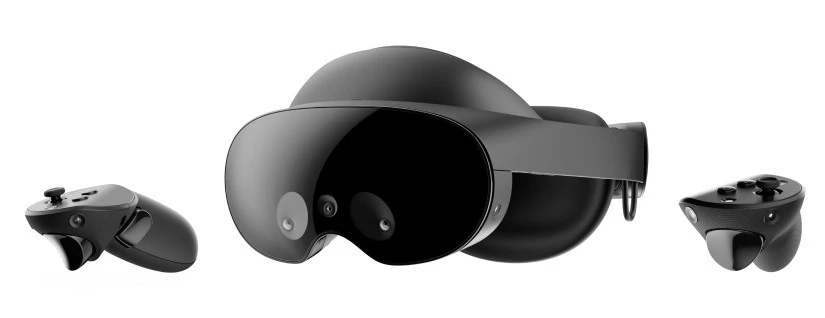Discovering Meta Quest Pro: Features, Benefits, and More
Posted on June 14, 2023 24 minutes 4987 words
Table of contents
Unfolding Meta’s Journey: From Facebook to Quest Pro
In the grand canvas of technological innovations, there stand out a few corporate entities that have not only evolved with the times but also spearheaded major revolutions. Among these visionaries is the company Meta, formerly known as Facebook. Meta has grown from being a university-only networking site to a multi-billion-dollar conglomerate that shapes the future of human interactions and experiences in the virtual realm. This transformation is made tangible through their strides in virtual reality (VR), particularly through their Quest line of products.
Brief History of Meta (Formerly Facebook)
Meta was born out of a dorm room in Harvard University in February 2004, christened as The Facebook by its creators Mark Zuckerberg, Eduardo Saverin, Dustin Moskovitz, and Chris Hughes. Initially a Harvard exclusive, it expanded to other Ivy League schools by 2005, and by 2006, it opened its doors to anyone with a valid email address, earning the moniker ‘Facebook’.
Facebook’s journey to becoming a public company in 2012 was marked by significant milestones, including the introduction of the News Feed in 2006. But perhaps the most transformative step was taken in 2013, when Facebook acquired Oculus VR, indicating its intention to lead in the world of virtual reality.
The year 2021 marked a pivotal point when Facebook rebranded to Meta, signaling a renewed focus on the metaverse—a confluence of virtual spaces where physical boundaries cease to exist. This shift was also an effort to restore the company’s image after facing criticism over user privacy and the spread of misinformation.
The Evolution of VR Eechnologies
Since the development of the first Head-Mounted Display (HMD) in the 1960s, VR technology has been on a steady march forward. Initially used by pilots for training, VR’s potential exploded with the advent of computer-generated imagery (CGI) and 3D graphics in the 1980s. This allowed the creation of more immersive and realistic virtual worlds, sparking interest in VR gaming and entertainment.
The 1990s saw the release of the first commercially available VR headsets, including the Virtuality system, which was used not only for entertainment but also for education and training purposes. The 2000s witnessed VR becoming more accessible as the cost of headsets dropped and Virtuality became the first mass-produced VR entertainment system.
The 2010s were pivotal as Oculus, now a part of Meta, launched the Oculus Rift, the first modern VR headset with stereoscopic 3D and head tracking. This development became a catalyst for other VR headset releases like the HTC Vive and PlayStation VR. Today, VR technology is more affordable and advanced, with features like hand scanning, finger tracking, and varifocal technology, leading to an enriched VR experience.
Introduction to the Meta Quest Line of Products
The Quest series, produced by Meta, stands as a testament to the incredible strides in VR technology. The first product, Meta Quest, debuted in 2019 as a standalone VR headset that did not need a powerful computer or external sensors to operate.
The next product, Meta Quest 2, released in October 2020, was a significant upgrade with a more powerful processor, an improved display resolution, and a refined ergonomic design. The headset offered increased comfort, and the controllers were easy to grip, enhancing user experience.
The most recent addition, Meta Quest Pro, aimed at professional and industrial use, was introduced at Meta Connect 2022. As Meta’s most advanced VR headset, it offers a high-resolution display, eye-tracking technology, and hand and finger tracking.
Mark Zuckerberg recently announced the upcoming launch of the Meta Quest 3, a next-generation virtual and mixed reality headset set to debut later this year, as detailed in our Meta Quest 3: The Next Generation of Virtual and Mixed Reality blog post on Capsule Sight. This wireless, all-in-one headset boasts Meta’s highest resolution display and a next-generation Snapdragon chipset for superior graphical performance. In addition to the Quest 3, Meta’s roadmap suggests another Quest device launch in 2024, potentially a cost-effective Meta Quest Lite. As the Quest 3 launch approaches, Meta is also reducing the price of the Quest 2, enhancing the VR experience across its product range.
Conclusion
Meta’s journey—from its inception as Facebook to its current quest to build the metaverse—illuminates the transformative power of technology. Through the Meta Quest line of products, we can glimpse the future of human interaction, a world where the physical and virtual blur, creating endless possibilities.
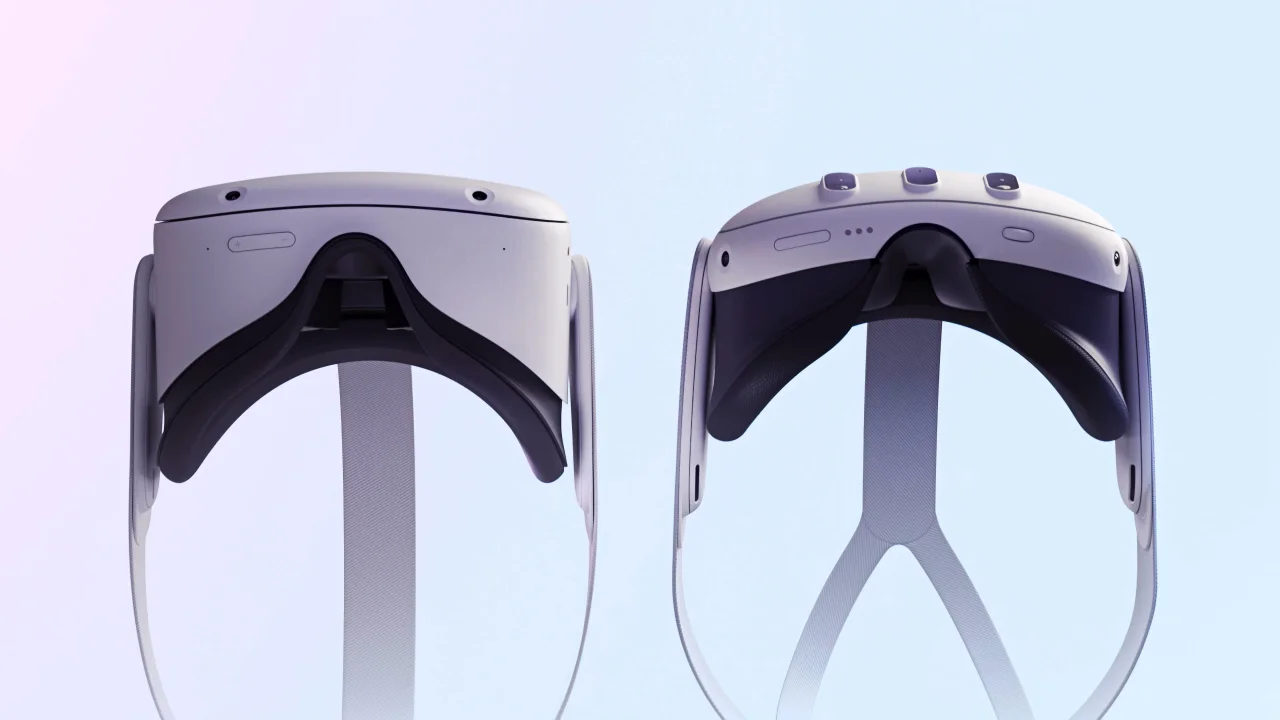
Unboxing the Meta Quest Pro
First Impressions and Design Overview
The unboxing experience of any high-tech gadget can evoke a sense of child-like glee and curiosity. This is certainly the case with Meta Quest Pro, a sleek, professional-grade Virtual Reality (VR) headset primarily aimed at work environments.
As soon as you open the box, you’re greeted with the stylish design of the Meta Quest Pro. The glossy black front panel, in contrast to the previous model’s white shell, underscores its professional appeal. The design is both visually pleasing and ergonomic, with a single wraparound head strap that is padded both front and back to ensure optimal comfort. Moreover, the rear section houses the battery, efficiently distributing weight for a more balanced feel.
Meta Quest Pro’s specifications indeed match its high-end aesthetic. Powered by the Snapdragon XR2+ processor, it outperforms the Quest 2 by a whopping 50%. With 12GB of RAM and a generous 256GB of storage, it promises impressive performance. The resolution is similar to the Quest 2, but a higher refresh rate assures smoother visuals. The addition of 10 internal and external cameras further enhances eye and face tracking capabilities.
As for the price, the Meta Quest Pro retails for $999.99. While steep, it’s accessible to enthusiasts and professionals looking for a high-end VR solution without breaking the bank compared to exclusively commercial headsets.
Hardware Specifications and What’s Included in the Box
The Meta Quest Pro’s components, neatly packed in the box, attest to its high-end nature. Here’s a quick rundown of the key hardware specifications:
- System on a chip: Qualcomm Snapdragon XR2+
- Memory: 12 GB LPDDR5
- Storage: 256 GB
- Display: LCD 1800 x 1920 per eye with a refresh rate of 72 - 90 Hz
- Graphics: Adreno 650
- Online services: Quest Store
- Controller input: Meta Quest Touch Pro
- Cameras: 10 high-resolution color cameras
Opening the box, you will find:
- Meta Quest Pro headset
- 2 Meta Quest Touch Pro controllers
- 2 stylus tips
- 2 partial light blockers (L & R)
- Charging dock
- 45W USB-C power adapter
- Controller charge cable
- Charging cable
- Cable clip
- Protective cover
- Cleaning cloth
- 2 wrist straps
Apart from these, additional accessories such as more comfortable and larger forehead pads are available for purchase.
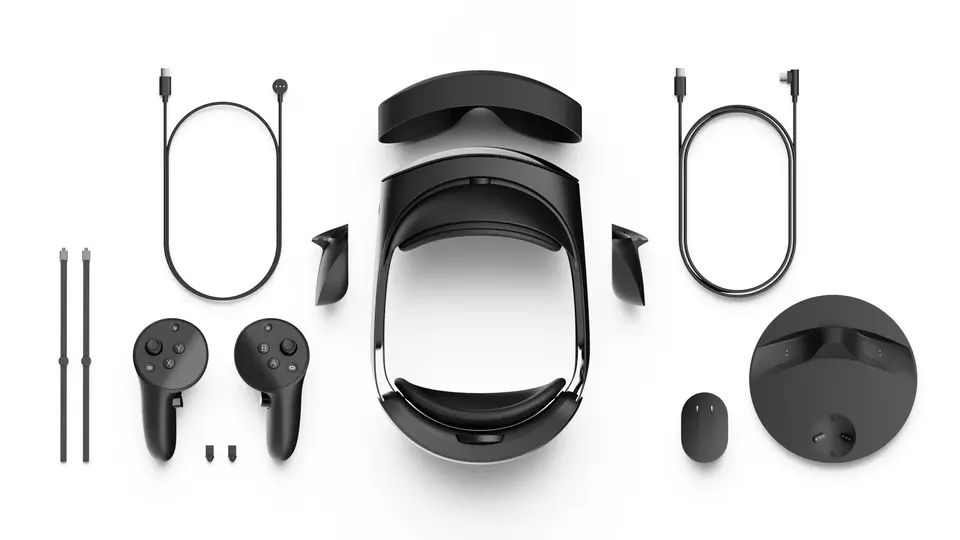
Initial Setup and User Experience
Setting up the Meta Quest Pro is straightforward, with tutorials readily available on YouTube for guidance. The process is akin to the Quest 2’s setup, including creating or logging into a Meta account, connecting to Wi-Fi, and defining the play area using the Guardian system.
As a professional VR headset, the Meta Quest Pro’s user experience is notably different from a gaming-focused device. Despite an operating system that may be less intuitive for some, its merits shine for creative professionals and businesses. The headset’s superior material quality, comfort, and flexibility make it a worthy investment for those who can afford it.
To kickstart your journey, a host of recommended games, apps, and features are readily accessible online. The impressive technical specifications, including the powerful processor, ample RAM, and high-resolution cameras, ensure a smooth and immersive experience.
The included accessories further enhance user experience, promising both convenience and enhanced immersion. With the Meta Quest Pro, you’re set to experience the metaverse like never before.
Detailed Feature Analysis
Display and Visuals: The Experience and Quality
The Meta Quest Pro’s visuals lie at the heart of the immersive experience it provides. Packed with a quantum dot LCD display that renders a per-eye resolution of 1800 x 1920, the headset offers stunning graphics. This clarity, combined with pancake lenses that contribute to a 40% slimmer design compared to the Quest 2, greatly enhances user immersion.
An expansive field of view, boasting a horizontal range of 106° and a diagonal range of 96°, aids in creating an almost real-life experience. Accompanying this, a lens separation range of 58mm - 70mm ensures optimal focus for each user.
The Pro model introduces a new style of lenses, namely pancake lenses, that are wider and sharper than the fresnel lenses used in previous Meta headsets. Coupled with two new LED displays and high-resolution outward-facing cameras, the Meta Quest Pro promises an impressive visual experience.
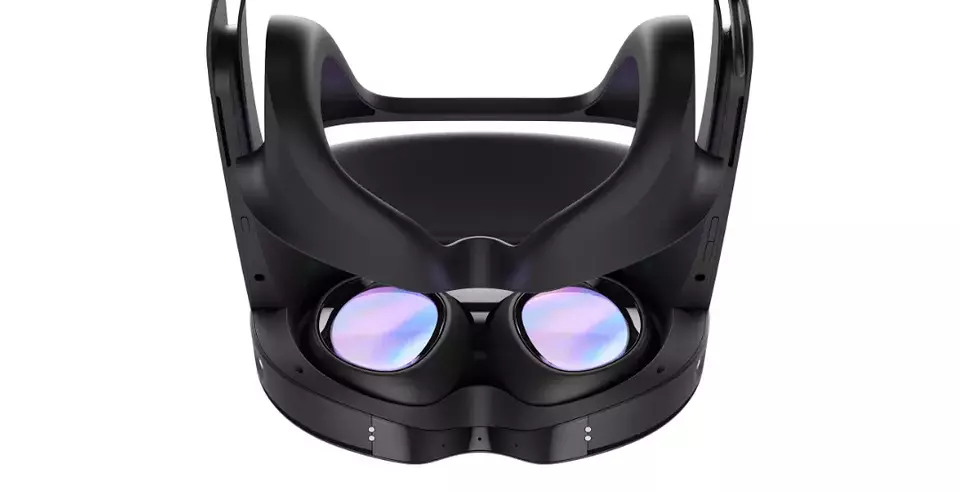
Audio Capabilities: Sound Quality and Immersion
Sound quality is equally important as visuals in constructing an immersive VR environment. The Meta Quest Pro delivers in this aspect, featuring built-in speakers that emit crisp and loud audio without requiring headphones. The speakers’ impressive directionality enables users to discern the source of sounds within the virtual landscape, adding another layer of realism.
The headset also accommodates those who prefer a more personal audio experience with its 3.5mm jack, allowing users to connect any headphones of their choice. Additionally, custom-made stereo VR headphones designed specifically for the Meta Quest Pro are available for purchase. To facilitate communication, the headset comes equipped with a dependable built-in microphone.
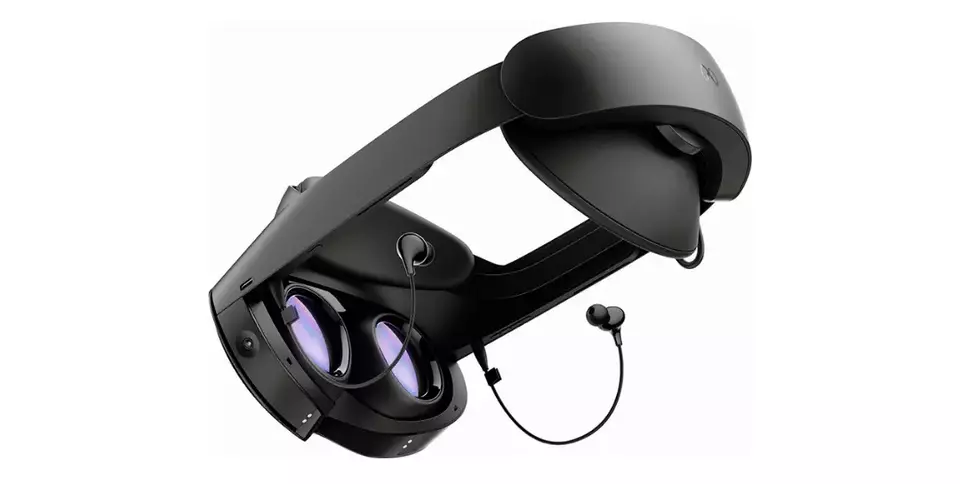
Tracking and Controllers: Accuracy and Responsiveness
Equipped with an impressive 16 tracking cameras, the Meta Quest Pro provides a level of tracking accuracy that surpasses many of its competitors. The cameras, which include five internal and five outward-facing ones, enable accurate eye and face tracking and robust scene understanding without necessitating additional external sensors.
The Quest Pro comes with two new Touch Pro Controllers, which have built-in sensors for both hand and finger tracking. These sensors help streamline the design of the controllers and provide an upgrade in accuracy and responsiveness. The controllers also feature improved haptics, adding an extra level of immersion, especially in apps where you can flip the controllers over to use as a stylus.
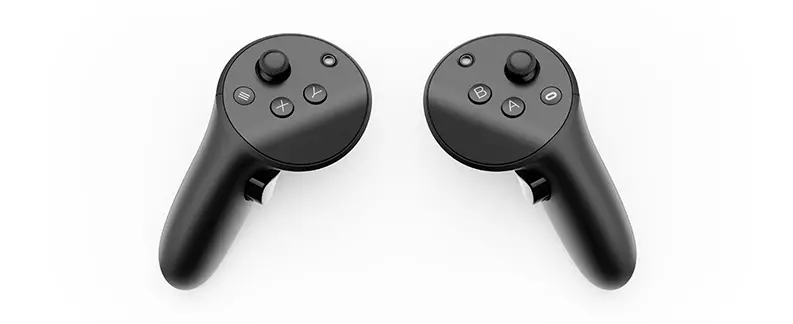
Comfort and Usability: Fit, Weight, and Session Length
Comfort and usability are key factors in the design of the Quest Pro. The headset is designed with a curved battery built into the back, eliminating the need for wires or a belt-mounted power cell. It also includes a soft forehead cushion and a handy dial for adjusting the headband, making it extremely easy to put on and wear.
Despite the attention to comfort and balance, the Quest Pro’s weight, just over a pound and a half (722 grams), can be a bit of an issue during longer sessions. However, adjustments can be made to how the Quest Pro sits on your head to relieve excess pressure.
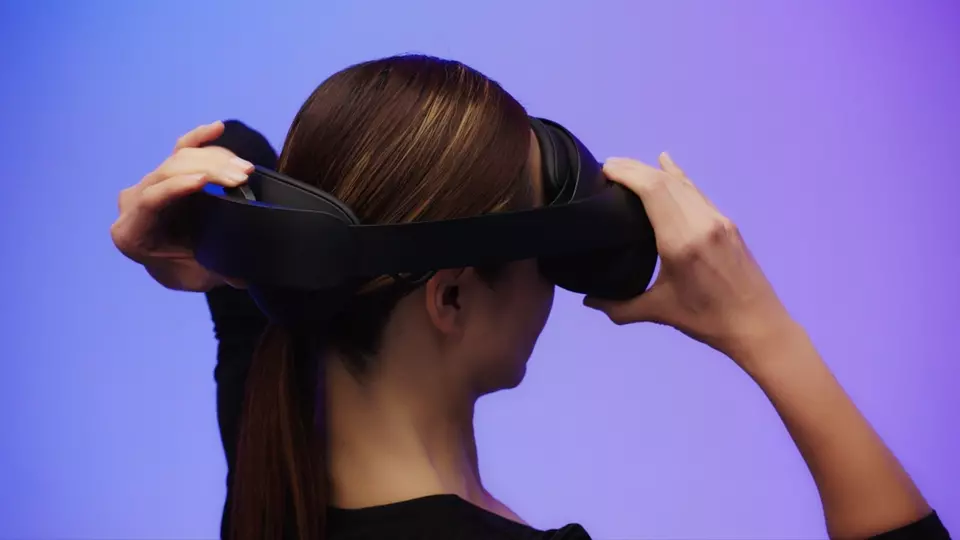
Battery Life: Duration and Recharge Time
While Meta doesn’t provide official battery life claims for the Quest Pro, user experience suggests that you can expect between two and a half and three and a half hours on a charge, depending on the use case. This is typically longer than most users want to be in VR in a single sitting. For those who need to use the headset for extended periods, the Quest Pro also comes with a six-foot (2 meter) USB-C cable that can be used to keep it running. The included wireless charging dock provides a convenient solution for keeping both the headset and the controllers powered up.
Software and Applications
Overview of the Operating System and Interface
Meta Quest Pro’s backbone is the operating system, which is based on a fork of Android. This OS has been adapted and optimized by Meta for use in their headsets, offering compatibility with Apple iOS 10+ or Android 5.0+ devices for setup.
The headset’s user interface has been refreshed for the Meta Quest Pro. With an ambient color palette, smoother animations and curves, more responsive controls, and easier-to-read type, this interface is a marked improvement from its predecessors. It brings better multitasking capabilities, making it suitable for professional use.
The setup process is straightforward, ensuring users can quickly start exploring the virtual world. For those seeking additional comfort, accessories like forehead pads and comfort kits are available for purchase on platforms such as Amazon.
Noteworthy Pre-installed Applications
While precise information on the pre-installed applications in Meta Quest Pro is sparse, the device, much like its predecessor, comes with a selection of pre-loaded games. These, however, are mostly simple tech demos to showcase the VR capabilities of the device.
Meta Quest Pro is compatible with sideloading content through SideQuest, a platform that allows users to install content that is not available on the official Quest Store or pre-approved by Meta. To help users navigate this process, various YouTube tutorials are available for downloading and installing free apps and games.
Availability and Highlights of Games and Other Applications
The Meta Quest Pro offers an expansive library of games and applications, ranging from the pre-loaded demos to more complex games and apps available through the official Quest Store and SideQuest.
One highlight is the Painting VR app, a mixed reality experience that enables users to paint, sketch, and draw in a virtual studio. This application is notable as it showcases the Quest Pro’s developer features and adds a social VR element by allowing users to exhibit their art in a virtual metaverse.
Games like Cubism and I Expect You to Die offer immersive and engaging experiences that take full advantage of the headset’s capabilities. The improved three-window multitasking in the Quest Pro’s desktop mode even makes it easier to switch between apps and stay connected while you’re in VR.
Meta’s Proprietary Software and Its Benefits
The Meta Quest Pro runs on a Qualcomm Snapdragon XR2+ chip, providing it with a potent processing capability to handle its software library, which is similar to that of the Quest 2. This compatibility ensures that the Quest Pro can run various VR games, apps, and features available on the official Quest Store.
Furthermore, the support for sideloading content using SideQuest enables users to access an even broader array of content. This combination of powerful hardware, flexible software, and broad content compatibility provides users with an expansive and immersive virtual reality experience.
Connectivity and Integration
Connectivity Options With Other Devices
The Meta Quest Pro offers a variety of connectivity options, making it a versatile device that can easily integrate with your existing tech ecosystem. The headset supports both Wi-Fi and Bluetooth connections, allowing it to connect to a variety of devices. It also includes a USB-C port for charging and data transfer. The Quest Pro can be connected to a PC via the Oculus Link cable, allowing you to access PC VR games and applications. Additionally, the headset can be used wirelessly with a PC using the Air Link feature, provided your Wi-Fi is fast enough.
Integration with the Metaverse and Other Meta Platforms
The Meta Quest Pro’s immersive capabilities extend to its integration with the Metaverse and other Meta platforms. One standout feature is the strategic partnership between Meta Platforms and Microsoft, resulting in the integration of Microsoft Teams on the Meta Quest Pro. This opens up new opportunities for virtual meetings and collaborative work in the Metaverse.
The user interface of the Meta Quest Pro has been enhanced, featuring smoother animations, more responsive controls, and a fresh, ambient color palette. These improvements make the headset more suitable for professional use within Meta’s digital ecosystems.
The Meta Quest Pro also offers seamless access to Meta’s interoperable immersive services. Users can step through digital Metaverse portals to access Horizon Worlds, Workplace, and Venue, providing a multifaceted virtual experience.

Compatibility with Third-party Applications and Systems
The Meta Quest Pro’s compatibility extends to various third-party applications and systems. The redesigned interface supports better multitasking, a key feature that is made possible by the headset’s increased memory compared to the Meta Quest 2. For instance, users can utilize the browser without having to close the active VR app.
The software library, powered by a Qualcomm Snapdragon XR2+ chip, mirrors that of the Quest 2, allowing the Meta Quest Pro to run an array of VR applications.
The integration with Microsoft Teams not only highlights the headset’s compatibility with third-party applications but also positions it as a tool for virtual collaboration in professional settings.
Finally, the Meta Quest Pro’s operating system, a custom fork of Android, ensures compatibility with a wide range of devices. The headset can function with Apple iOS 10+ or Android 5.0+ devices, making it accessible to a broad user base.
Comparisons and Market Position
A Comparison with Previous Models (Quest and Quest 2)
The Meta Quest Pro significantly enhances the features found in previous models, including the Quest and Quest 2. Performance-wise, the Meta Quest Pro doesn’t drastically outpace its predecessor, the Quest 2, but it introduces several notable improvements that justify its higher price.
While both devices offer similar gaming libraries, the Quest Pro sports better lenses, superior optic technology, clearer front cameras, and stronger color passthrough, adding a touch of professional edge to the VR experience. Additionally, the Quest Pro’s display is more vibrant, boasting a 30% greater color gamut and local dimming that provides a 75% increase in contrast.
Crucially, the Quest Pro’s wider field of view, increased RAM, and additional camera make it a far more immersive device. Powered by a high-performance Qualcomm Snapdragon XR+ chip, the Quest Pro operates at a speed 50% faster than the Quest 2, enabling better graphics and smoother gameplay.
A significant selling point for the Quest Pro is its redesigned interface, tailored for professional use. This update allows for better multitasking, supported by the doubled memory compared to the Quest 2.
Comparison with Other Major VR Headsets in the Market
Against other major VR headsets in the market, the Meta Quest Pro carves out a unique space. It outperforms the Oculus Quest 2 with superior internal specs and enhanced features, yet its price point may deter those seeking an affordable VR option.
When compared to the more premium Apple Vision Pro, the Meta Quest Pro’s value proposition becomes more apparent. While the Vision Pro commands a hefty $3,499 price tag, the Quest Pro seeks to deliver high-end VR experiences to a wider audience.
The Meta Quest Pro stands out as one of the most compelling standalone VR headsets in the market. Its focus on enterprise and professional use separates it from competitors, making it an attractive option for businesses and developers interested in leveraging Virtual Reality and Augmented Reality technologies.
Understanding Its Place and Impact in the VR Industry
The Meta Quest Pro arrives amidst rapid growth in the VR industry, with the global market expanding by more than 241% in Q1 2022. The device is poised to further stimulate this trend, particularly in the professional-oriented VR market, which has been underserved by previous iterations of the Quest series.
The Quest Pro’s impact is expected to be transformative, particularly in the entertainment industry. By ushering in new immersive gaming experiences, it’s poised to redefine interactive entertainment.
The Quest Pro is designed for long-term use, empowering users to collaborate in virtual spaces like never before. Its mixed reality capabilities, a significant upgrade from previous models, allow users to toggle between VR and a limited form of AR, perfect for professional use.
Coupled with a rich selection of applications, demos, and games, the Meta Quest Pro offers unparalleled experiences. The Meta Presence Platform, launched during the Oculus/ Meta Quest 2 lifecycle, has expanded its features for developers with the Quest Pro. A standout experience is Painting VR, a mixed reality painting simulator that showcases art in a virtual studio, hinting at the vast potential of professional use-cases in the metaverse.
In summary, the Meta Quest Pro is more than just a high-end VR headset. It’s a gateway to a new era of professional virtual and mixed reality experiences, shaping the future of the VR industry.
The Meta Ecosystem
Explanation of Meta’s Broader VR and AR Strategy
Meta Platforms Inc., formerly known as Facebook Inc., has unveiled an ambitious roadmap for virtual and augmented reality, crystallizing the company’s shift towards creating an immersive ‘metaverse’ experience. Meta’s approach to VR and AR can be seen as a multi-pronged strategy.
Meta’s virtual reality (VR) endeavors are centered around the Oculus platform, with significant financial investment and cutting-edge innovation. With products like the Quest, Quest 2, and the recently launched Quest Pro, Meta has made VR more accessible and attractive for consumers, particularly within the gaming sector. However, the company is also expanding its reach to wider audiences by introducing more diverse functionalities and applications, ranging from social interaction to business collaboration tools.
In the realm of augmented reality (AR), Meta’s roadmap is equally ambitious. The company has previously hinted at its plan to develop smart glasses that leverage AR technology, projecting a potential release within the next decade. AR offers the opportunity for seamless integration of digital experiences into everyday life, and Meta’s progress in this area could revolutionize the way we interact with technology.
The Role of Quest Pro within the Metaverse
In Meta’s grand vision of the metaverse, the Quest Pro holds a special place. Beyond providing immersive gaming experiences, the Quest Pro is seen as a versatile tool that can support a variety of professional and personal tasks within the metaverse. The device’s superior technical specs, including enhanced optic technology, a wider field of view, and a robust processor, allow for more effective and realistic virtual collaborations and interactions.
The Quest Pro has been intentionally designed to bridge the gap between entertainment and productivity. This aligns with Meta’s strategy to evolve the metaverse beyond gaming and social experiences, making it a platform for innovation, creativity, and enterprise. Moreover, the Quest Pro’s mixed reality features pave the way for a seamless transition between physical and digital spaces, contributing to the creation of a more integrated and immersive metaverse.
Potential Future Developments and Speculations
Looking ahead, Meta’s VR and AR strategy is likely to evolve and expand in many intriguing ways. Based on current trends and speculations, here are a few potential developments:
Firstly, the user interface of the Quest Pro is expected to be further enhanced to support a wider range of professional tasks. Rumors suggest that Meta is actively working on a new interface that would allow better multitasking and more effective utilization of the device’s powerful memory and processing capabilities.
Another exciting prospect is the rumored Quest Pro 3. Leaked information suggests that this future iteration may further build on the mixed reality capabilities of its predecessor, offering an even more seamless blend of virtual and physical experiences. Eye-tracking technology and refined lenses are among the anticipated features.
Finally, as Meta continues to build its metaverse, the company is expected to keep pushing the boundaries of VR and AR technology. The professional-oriented VR market appears to be a key target, with devices like the Quest Pro serving as a launchpad for this initiative. Continued investment in these areas could see a growing portfolio of VR and AR tools and experiences, opening up new opportunities for individuals and businesses alike.
In conclusion, the launch of the Quest Pro signifies a major step forward in Meta’s journey towards creating a comprehensive and immersive metaverse. As the VR and AR landscape continues to evolve, it will be fascinating to see how Meta’s strategy adapts and progresses in the years ahead.
Pros and Cons
The Key Advantages of the Meta Quest Pro
Professional Focus
The Meta Quest Pro is designed specifically for professional environments, leveraging ten internal and external cameras for advanced eye and face tracking, thereby providing an immersive and interactive user experience ideal for remote work and virtual collaboration.
High-Resolution Display and Enhanced Interface
The device delivers a visual experience with a high resolution of 1,800 x 1,920 pixels per eye. It also features an improved user interface with smoother animations and more intuitive controls.
Upgraded Controllers and Tracking Technology
The Quest Pro comes with new Touch Pro Controllers with built-in sensors for hand and finger tracking, resulting in increased accuracy and responsiveness that enhance the overall VR experience.
Superior Hardware
Powered by a Qualcomm Snapdragon XR2+ chip, twice the memory of its predecessor, and a high-resolution screen, the Quest Pro surpasses the Quest 2 by 50% in terms of performance.
Metaverse Integration
The Quest Pro plays a pivotal role in Meta’s metaverse vision. It comes with pre-installed Horizon Workrooms, a virtual office space allowing for immersive collaboration and communication.
The Drawbacks and Limitations of the Quest Pro
Price
The most notable barrier for many potential users is its steep price. Retailing at $999.99 USD, the Quest Pro’s cost may deter average consumers, positioning it as a more viable choice for businesses and professionals who can justify the investment.
Operating System
Some users have reported that the Quest Pro’s operating system is less user-friendly and can be a source of frustration, especially for individuals new to the VR environment. This could potentially affect those seeking an effortless and intuitive VR experience.
Weight
The Quest Pro weighs over a pound and a half (722 grams), which, despite its comfort-oriented design, could be bothersome during extended use.
Battery Life
The battery life of the Quest Pro, while generally adequate for most users, might be insufficient for those planning to use the headset for extended periods. The device does, however, come with a six-foot (2 meter) USB-C cable to keep it powered during use.
Overall, the Quest Pro offers numerous exciting features for professional VR use but its high cost, weight, and some user experience issues might narrow its appeal. Nonetheless, for users who can fully utilize its advanced features, the Quest Pro could indeed be a game-changer.
Conclusion
Who is the Meta Quest Pro designed for?
As we try to ascertain the target demographic for the Meta Quest Pro, the ambiguity becomes evident. This has sparked much debate, but upon delving into the topic, some key segments emerge.
Firstly, it’s evident that Meta perceives the Quest Pro primarily as a productivity and work tool. The headset’s design and functionality aim at enhancing collaboration in virtual reality (VR), making it an excellent device for creative professionals and businesses, especially those that can accommodate its hefty price tag of $999.99 USD.
Meta has also directed the marketing of the Quest Pro towards specific professionals such as designers and architects. The company suggests that the features offered by this headset will significantly aid these creative professionals in their workflows.
In the words of Mark Zuckerberg, the Quest Pro is designed for those who seek the top-of-the-line VR experience, the enthusiasts, the prosumer-type folks, and those who want to leverage VR for productivity.
Finally, another sector that Meta is targeting with the Quest Pro is creators and working professionals who are eager to explore VR for meetings and collaborative work.
In summary, while the Meta Quest Pro is primarily aimed at professionals and businesses who can benefit from its unique features and are able to afford it, it could also find appeal amongst VR enthusiasts and tech aficionados who desire the highest levels of comfort and performance for their gaming experiences.
Price vs Value Assessment
When considering the price to value ratio for the Meta Quest Pro, a few crucial points come to light.
Undeniably, the Quest Pro comes with a steep price tag of $999.99 USD, making it less accessible to the average consumer and instead positions it as an attractive option for professionals and businesses who can offset the cost.
The Quest Pro offers significantly superior hardware than its predecessor, the Quest 2. Noteworthy enhancements include a faster Snapdragon XR2+ processor, twice the memory, and a higher resolution screen. Its display quality is vastly superior to the Quest 2, and the new pancake lenses allow for a larger sweet spot of maximum clarity. The Quest Pro’s color-passthrough camera also offers four times the resolution of the Quest 2, significantly improving the mixed-reality feature.
The design and functionalities of the Quest Pro are tailored for professional work environments, which, along with its better comfort and wearability, justifies its higher price to some extent.
In essence, while the Meta Quest Pro is indeed pricey, its unique design tailored for professional environments, significant hardware upgrades, and enhanced comfort make it a valuable investment for professionals and businesses.
Final Thoughts and Verdict
The Meta Quest Pro pushes the boundaries of what a VR headset can be. It’s a device that dares to explore new territories by incorporating an array of unique features that are primarily catered to a professional audience.
The Meta Quest Pro certainly comes at a premium price. However, its targeted design for work environments, advanced hardware capabilities, and improved wearability arguably justify the cost, particularly for those in professional or creative fields who could truly benefit from its features.
While it may not be the ideal choice for an average consumer, especially those seeking immersive gaming experiences, for businesses, designers, architects, and tech enthusiasts, the Meta Quest Pro stands out as an enticing proposition.
In conclusion, the Meta Quest Pro, with its focus on enhancing productivity and professional collaboration in the virtual realm, does manage to carve a niche for itself in the VR market. Whether it’s the right device for you depends entirely on your requirements, your professional needs, and of course, your budget.

